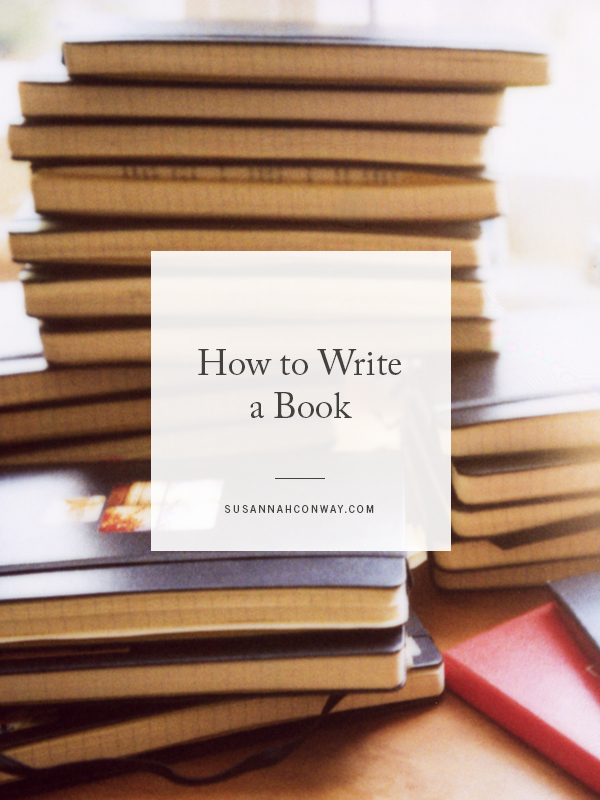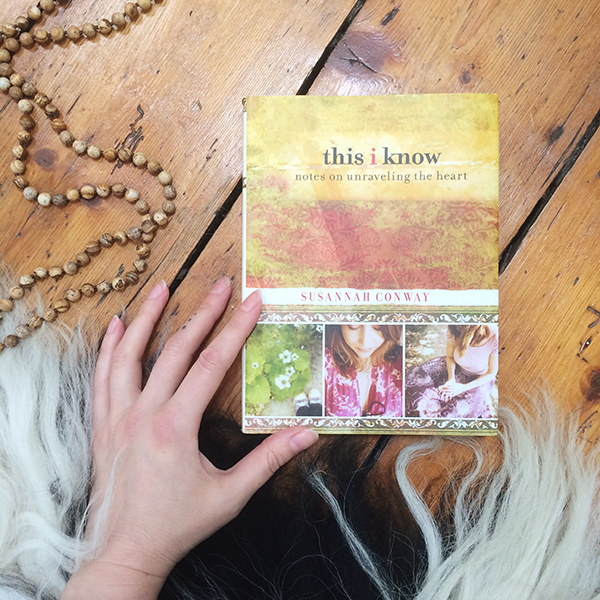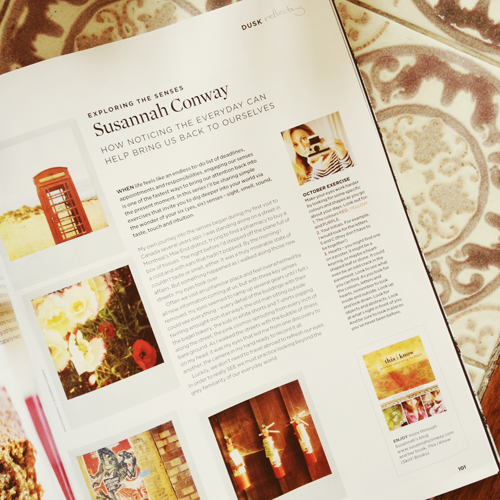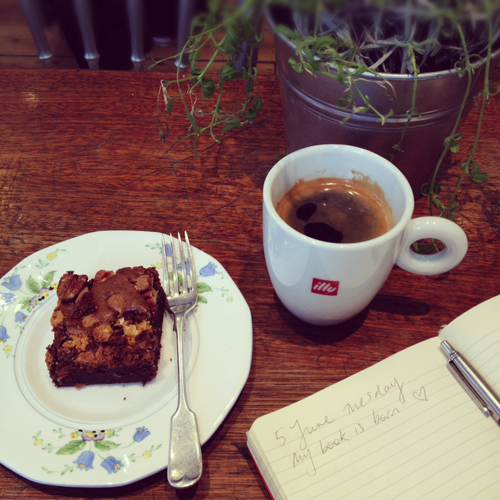
Before I wrote a book I had no idea how to write a book. Over the years I’ve bought many books about the art of writing — developing character, storyline, writing proposals, creativity, prompts, inspiration, confessions, memoirs, all of it — but no where in that thick shelf of books did I find the answer to my real question:
How do I write MY book?
So for those who have asked, and for my sweet friend who is embarking on her own book-writing odyssey this summer, here is a breakdown of how I finally found my way into the first draft of my (non-fiction) book.
1. The proposal.
Even if you’re not planning to approach a publisher and intend to self-publish, think of a proposal as your book’s blueprint. As nice as it would be to just sit down and have a whole book flow out of you, you really do need a structure to give your thoughts and inspirations something to hang on. In the end I wrote two proposals, the second a refined version of the first that helped me really nail down what my book was about. I wrote an overview, a chapter breakdown and a sample chapter (along with the other bits and pieces my publisher wanted to see, including a PDF of design ideas). The sample chapter was written during the weeks leading up to the birth of my nephew, a time when I was living on the edge of my emotions as I supported my sister through her first pregnancy. If you’ve read my book (or indeed just hung out here for a while) you’ll know that Abby and I are extremely close, and as I was going to be her birthing partner along with Noah’s dad, I was on constant red alert waiting for the call. As it turned out this helped me focus my thoughts as I figured out what the sample chapter (chapter three, in the end) was all about.
2. Break it down.
I spent far too long on this stage, and when I start writing my next book (already planning for it, in fact) I’ll try to move through this stage faster. But it was essential, because even though I’d identified the chapters in my proposal, I still hadn’t fleshed them out. Sitting down to write a 50,000 word book (which is actually quite short when you consider novels are usually 80,000+ words) feels like such a mammoth task, you’re instantly paralysed by stage fright. I burned a lot of brain cells trying to figure out how long, and how many, chapters there should be. In the end I decided on nine chapters of 5,000 words each, with the last 5,000 split between the introduction and epilogue. Sitting down to write a 5,000 word extended essay felt so much more do-able than the alternative. This is how I began to write in earnest — one essay at a time.
3. Planning.
I started and discarded a number of notebooks at the beginning as it felt essential that I find the right notebook to house my notes. At one point I was using index cards on a pin board to help me plan out the contents of each chapter. Ultimately this was procrastination and wasn’t as helpful as I’d hoped it would be. Next I tried a huge A4 Moleskine notebook, its impressive size seemingly just right for the enormity of my task. Wrong again — I filled about eight pages before deciding it was too cumbersome. So it was back to a regular sized Moleskine I went, the same size I use for my journalling. And it was there I stayed, gathering all my notes, ideas, quotes and anything else even vaguely connected to the book all in one place. Strange as it might sound this made me feel safe. I might scribble thought-threads into other notebooks, but everything got collated back into the main Moleskine. It was my (not very original) way to make the intangible tangible. The notebook remained by my side for six whole months and now sits smugly on a book shelf. I’ll never throw it out.

4. Do the grafting.
My biggest mistake was thinking I had plenty of time — this, I now know, is a common rookie error. Deadline six months away? Well, I’ve got plenty of time then haven’t I? But after weeks of shuffling index cards and furrowing my brow as I stared at the wall, I realised that if I didn’t start writing soon I was going to blow the entire thing. This was when the writing turned into a job. I couldn’t wait for the muse to arrive on my shoulder — I had to sit my arse down in the chair and TYPE SOMETHING. Didn’t matter if it was any good or not, I needed words on the screen. Most days this really did feel like work — which wasn’t necessarily a bad thing. Embarking on an extended writing project takes a lot of stamina and focus. The scary spectre of a deadline (and occasional check-ins with my editor) kept the pressure on, which in turn kept me writing.
Some mornings I couldn’t quite believe that writing a book was my official job. Yet I’d still procrastinate for the next six hours (damn you, internet!). Mostly I did this because I was scared. What do I have to say? Who is going to want to read any of this? Fifty percent of writing the book was actually persuading myself that I was ALLOWED to write the book. That’s when writing becomes a mind game, where you must get out of your own way and focus on the stories you’re telling, suspending your doubts for long enough to get your 1,000 words done for the day.
Much of those 1,000 words began as notes scribbled in the Moleskine. I’d then type them into Scrivener (each chapter had its own file) and begin to add more words. Dancing between handwritten notes and typed sentences works best for me — I seem to be more honest when I write with a pen. The more words I wrote the more encouraged I became. I didn’t start at chapter one (that was the last chapter I wrote because it felt like the ‘easiest’) but instead began with the chapter I had the most notes for. There were weeks when I was adding to several chapters at once, fleshing out anecdotes and indulging in edits. Nothing was written in chronological order — I just followed where my inspirations pulled me. I wrote myself into a lot of corners, too, so when that happened I’d cut the section out and start again. TIP: keep all your cuts in a separate file. You never know when something that didn’t make sense a month ago can be recycled back in.
5. Avoid distractions.
Everything is a distraction when you’re trying to write. I downloaded an app to disconnect me from the internet for XX minutes at a time. I’d set the timer for 40 minutes and write as fast as I could, telling myself I could peek at Twitter and make a coffee when the time was up. And that, basically, was how I wrote the whole book — in 40 minute increments. Sometimes I’d catch an updraft and write for longer. Sometimes I’d be lying in bed and whole paragraphs would download into my head — I’d scribble them into the Moleskine and type them up the next morning. Sometimes I’d stare at the screen and want to cry (in those moments I tended to reach for a jar of Nutella and a spoon. The book-baby weight piled on, needless to say.)
6. Refill the well.
Pinterest and Instagram were how I kept my sanity. Switching to the visual was the perfect antidote to all the wordiness and helped me reset my brain when I was feeling overwhelmed (read: often). I didn’t go for as many walks as I could’ve done. I didn’t take as many breaks as I should’ve done. But somehow I got the work done.
7. Finish strong.
The last weeks of writing the book are something of a blur now, but the overwhelming feeling was one of SHEER BLOODY PANIC. I was obsessed with the word count and went back over the manuscript again and again as I found holes in the text that needed to be plugged: stories that didn’t go anywhere, anecdotes that made no sense. I burned through a few small trees printing out the chapters to read away from my desk; the really tangled sections I read aloud to help me see where the words didn’t flow.
There was also the not-so-small matter of selecting the Polaroids to accompany the words. While this was definitely the most intuitive part of creating the book, it still took time to figure out — some of the chapters in the first draft looked very different to how they do now.
In the end I pulled it all together as best I could with the time I had left. I drank a LOT of coffee in those last days.
What I would do differently?
Nothing, actually. It was written in the way it was meant to be written to be the book it has turned out to be. However, next time I will take better care of my health. The majority of the first draft was written during the winter months and I comfort-ate my way through the entire experience. Some of the key themes in the book — solitude, grief, creativity, renewal — required me to be in that exact space as I wrote. There was no way I could be out on the town with a date every night and then wake up the next morning to write about the importance of solitude. And so the writing of the book became the living of the book. And it makes me wonder if that’s how it will be as I begin to dig into book number two. Because This I Know has nine chapters and I’m ready to start writing the proposal for Chapter Ten.
Now read: Notes on editing a book
And then: leave a comment on this post if you’d like to win a signed copy of the book. If you already have a copy (thank you!) I can send the book to a friend of your choosing (or, you know, you can give them your copy and YOU get the signed book + some postcard-y goodness ;-)
To enter, simply tell me one accomplishment you’re proud of — big or small!
I’ll pick the winner’s name on Friday x The giveaway is now closed x






 Lots of you have been reaching out to me wanting to know the dates of my book tour, so I thought it was time to tell you the dealio. I have set tentative dates and am working with some lovely conspirators to set up events, but it all hangs on one very important, essential and, frankly, annoying thing: me getting a work visa. I don’t so much need the visa for the tour but I definitely do for the
Lots of you have been reaching out to me wanting to know the dates of my book tour, so I thought it was time to tell you the dealio. I have set tentative dates and am working with some lovely conspirators to set up events, but it all hangs on one very important, essential and, frankly, annoying thing: me getting a work visa. I don’t so much need the visa for the tour but I definitely do for the  So here we are, at last. The Big Day. The one you’ve been waiting for ever since you spent your Saturday afternoons curled up on your teenage bed reading Stephen King novels. There is a book out in the world with my name on the cover. A book that I wrote all by myself.
So here we are, at last. The Big Day. The one you’ve been waiting for ever since you spent your Saturday afternoons curled up on your teenage bed reading Stephen King novels. There is a book out in the world with my name on the cover. A book that I wrote all by myself.